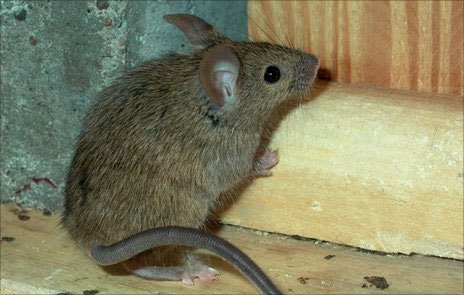New threat from European house mice
Scientists say some European mice have developed the ability to resist the most powerful poisons used to destroy them.
According to the BBC news agency, rats in Germany and Spain have quickly retrofitted " survival weapons " by crossing with an Algerian rat that they have been separating for more than a million years. The researchers say this type of gene transfer between very different and often different species is usually only detected in plants and bacteria.

European house mice have developed the ability to resist strong poisons
most used to destroy them by crossing with an Algerian rat species. (Photo: BBC)
Scientists are concerned, this rare but fast evolutionary form can herald the proliferation of new rodent generations, being able to resist most of the chemicals used to destroy them. . For example, the case of warfarin - a drug widely used in medicine as an anticoagulant, prevents the formation of harmful blood clots. It works by inhibiting a protein called VKORC1, which determines the production of vitamin K necessary for our blood clotting process.
Too much warfarin can lead to fatal bleeding. It was this characteristic that led to warfarin being used to produce a kind of rat kill in the 1950s. However, mice gradually developed resistance to warfarin and many groups of mice possessed new weapons. This has been found in many parts of the world.
Professor Michael Kohn of Rice University in Houston, Texas (USA) and lead the research, affirmed: " Our research is very special because it involves both breeding between two species of rats. Separation of each other from 1.5 to 3 million years ago Most of their children do not reproduce due to infertility, but there is still a small door for genetic genetics from one generation to another due to still there are a few female mice that are fertile ".
Thanks to these few fertile female mice, a large number of mice in Spain and Germany have achieved excellent antitoxin resistance in a very short time, although scientists are still unsure of when. first gene exchange.
- The mole rats eat the mouse rat manure to get instructions for raising children
- Mouse house - The Viking's special companion
- The Viking's companion
- The truth is hard to believe: A pair of experimental mice can be as expensive as a billion-dollar car
- Foreign mice are eating two million young birds on the British island
- Witches kill mice
- We will no longer have to fear floods when we live in a house like this
- Visit the computer mouse breeding area of the European Atomic Research Organization
- The house spider is a giant mouse
- The house was hidden, as it appeared in a fictional film that was in real life
- Earthquakes are a serious threat to humanity
- Bamboo house living with natural disasters in Vietnam
 Animal 'suffering' after hibernation
Animal 'suffering' after hibernation Why do goats climb well?
Why do goats climb well? Scientists were surprised to see chimpanzees eating turtles
Scientists were surprised to see chimpanzees eating turtles Giant catfish died deadly due to drought in Thailand
Giant catfish died deadly due to drought in Thailand